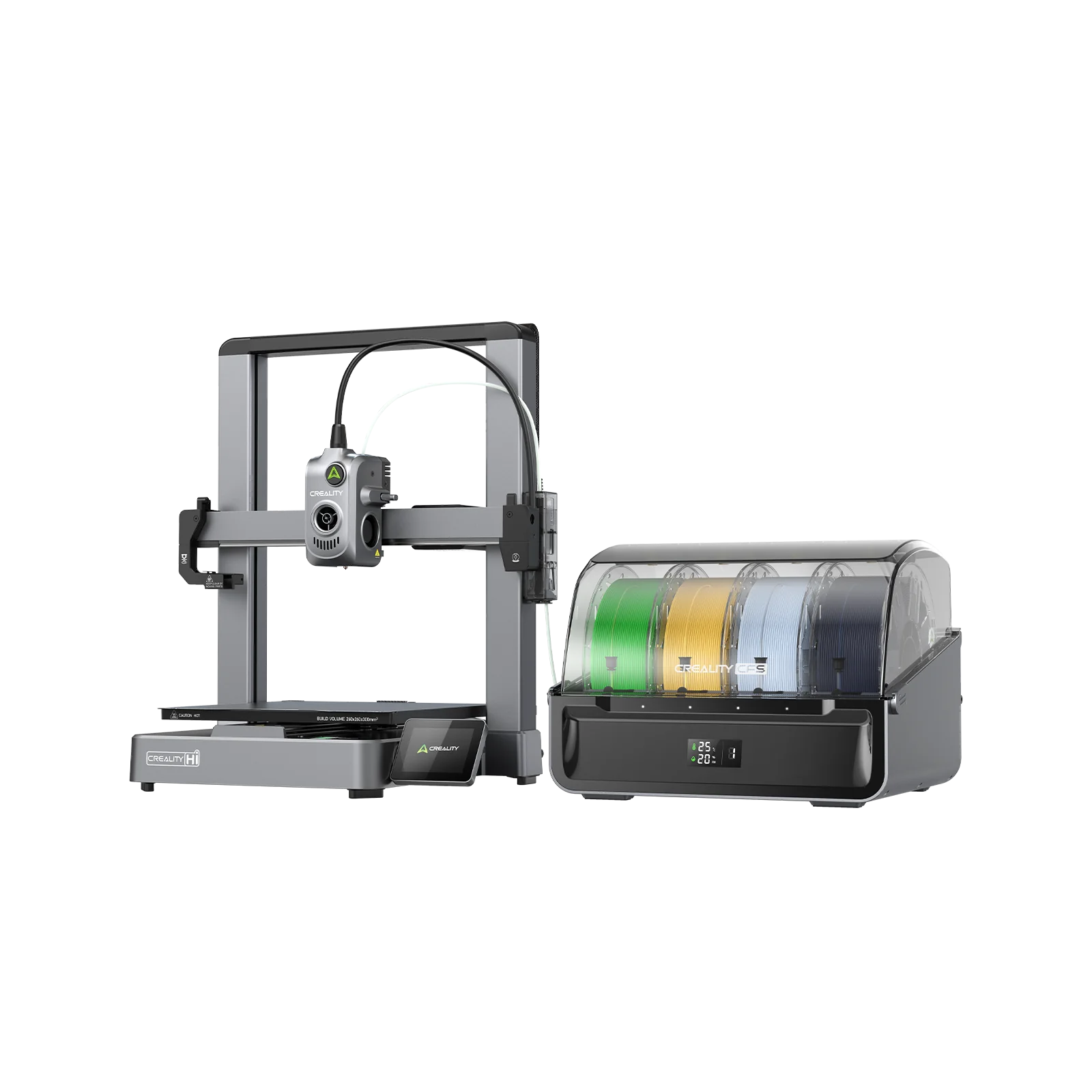Compare Hi Combo vs KP3S PRO V2
Comparison between the best 3D printers
Choose the best 3D printer at the best price. The cheapest 3D printers are here.
Buy a 3D printer here with 3D Fila.
 |
 |
|
| Model | Hi Combo |
KP3S PRO V2 |
| Printing Material | Filament | Filament |
| Buy Filament for Creality Hi Combo | Buy Filament forKingroon KP3S PRO V2 | |
| Estimated price | $469,00 | $229,00 |
| Manufacturer | Creality | Kingroon |
| Release Year | 2025 | 2024 |
| Print Volume [mm] | 260x260x300 | 220x220x250 |
| Printer Size [mm] | 409x392x477 | 420x400x450 |
| Weight [kg] | 19,14 | 12,6 |
| Power Loss Recovery | YES | NO |
| Enclosed printer | NO | NO |
| Bed Leveling | Automatic | Automatic |
| Filament End Sensor | YES | NO |
| Bed type | Heated | Heated |
| Power supply system | Direct Drive | Direct Drive |
| Standard nozzle | 0,4 | 0,4 |
| Maximum Nozzle Temperature [°C] | 300 | 260 |
| Maximum Bed Temperature [°C] | 100 | 100 |
| Maximum printing speed [mm/s] | 500 | 350 |
| Filament holder | YES | YES |
| Camera for supervision | YES | YES |
| Recommended filaments | Hyper-PLA/PLA/PETG/ABS/PLA-CF | PLA, PETG, TPU |
| Recommended slicers | Creality Print 5.1 | Cura, Orca Slicer |
| Maximum Resolution [mm] | 0,1 | 0,01 |
| Processor | ||
| Display | Touchscreen 3,2'' | LCD Mono |
| Power Supply | 390 W | 300 W |
| Connectivity | SD Wifi Creality Cloud | USB-C / MicroSD / Ethernet |
| Operating systems | Windows, Linux e Macbook | Windows, Mac, Linux |
| Date of registration in the system | 2025-01-27 | 2025-03-18 |
| Release date | 2025 | 2024 |
| Extra features | The Creality Hi Combo is an advanced 3D printer featuring the CFS system for up to 16 colors and intelligent filament management. It boasts a robust metal frame, speeds up to 500 mm/s, precise auto-leveling, an integrated extruder design, easy-to-swap tri-metal nozzle, and active vibration sensing for smooth prints. Its 95% pre-assembled, with a foldable touchscreen, built-in camera with privacy protection, and Creality OS support for a seamless and powerful experience. | The Kingroon KP3S Pro V2 is a high-speed FDM 3D printer with Klipper firmware, ensuring fast and precise prints. It features linear rails on all axes, a Direct Drive extruder with a 9.5:1 gear ratio, and an efficient ceramic heater. It includes an inductive sensor for automatic bed leveling, a PEI magnetic bed, a built-in accelerometer for vibration calibration, and Wi-Fi, Ethernet, and USB connectivity for remote control. |
| Support for multiple colors and materials (AMS and CFS) | YES | NO |
Notes * |
||
| Cost-benefit | 8 / 10 | 7 / 10 |
| Hardware | 5.4 / 10 | 0.8 / 10 |
| Tela | . | . |
| Print volume | 4 / 10 | 3 / 10 |
| Performance | 4 / 10 | 3 / 10 |
Conclusion |
| In comparing the Creality Hi Combo and the Kingroon KP3S PRO V2 3D printers, several factors highlight their distinct advantages and target audiences. The Creality Hi Combo, priced higher, offers a larger print volume, advanced features such as intelligent filament management, a robust metal frame, and faster maximum printing speeds. The inclusion of a filament end sensor and a camera for supervision adds convenience and monitoring capabilities that are beneficial for complex projects. Its extensive support for various filaments, maximum nozzle temperature, and a user-friendly touchscreen interface make it a versatile and powerful choice, especially for users who prioritize performance and advanced functionalities. Conversely, the Kingroon KP3S PRO V2, while more budget-friendly, provides solid performance with its high-speed capabilities, compact design, and efficient features like a magnetic bed and Klipper firmware. Although it lacks some of the advanced features found in the Hi Combo—such as filament management and a filament end sensor—the KP3S PRO V2 still delivers excellent value for those new to 3D printing or looking for a reliable printer without the need for extensive functionalities. Ultimately, the choice between the two models boils down to user needs and budget. For enthusiasts or professionals seeking the latest technology and advanced features, the Hi Combo represents a worthy investment. In contrast, the KP3S PRO V2 serves well for newcomers or budget-conscious users who value performance without the premium price tag. Each printer excels in its own right, aligning with different user expectations and printing requirements. |

